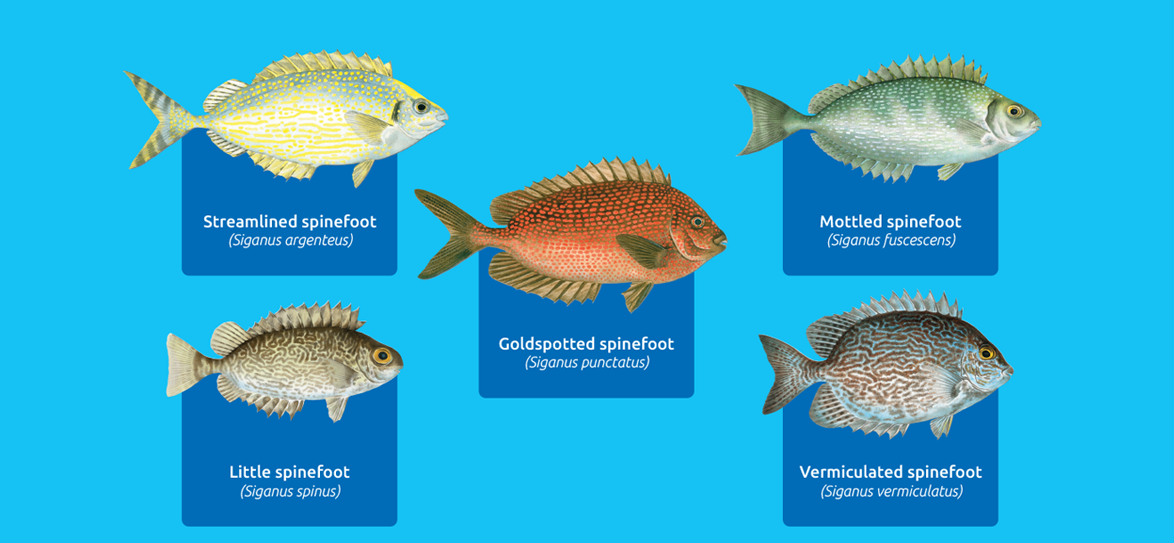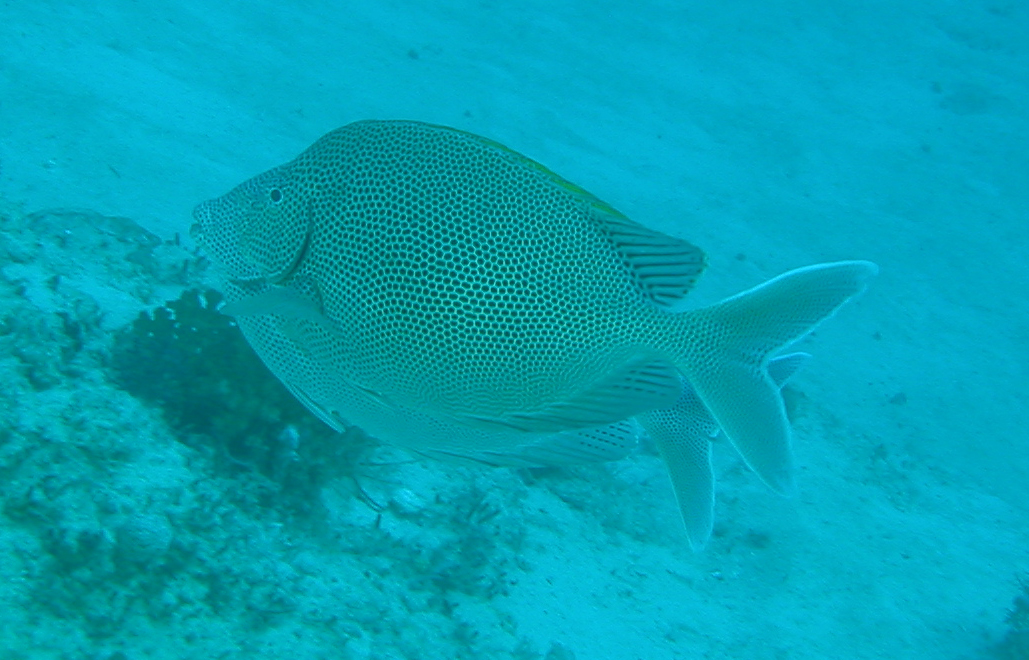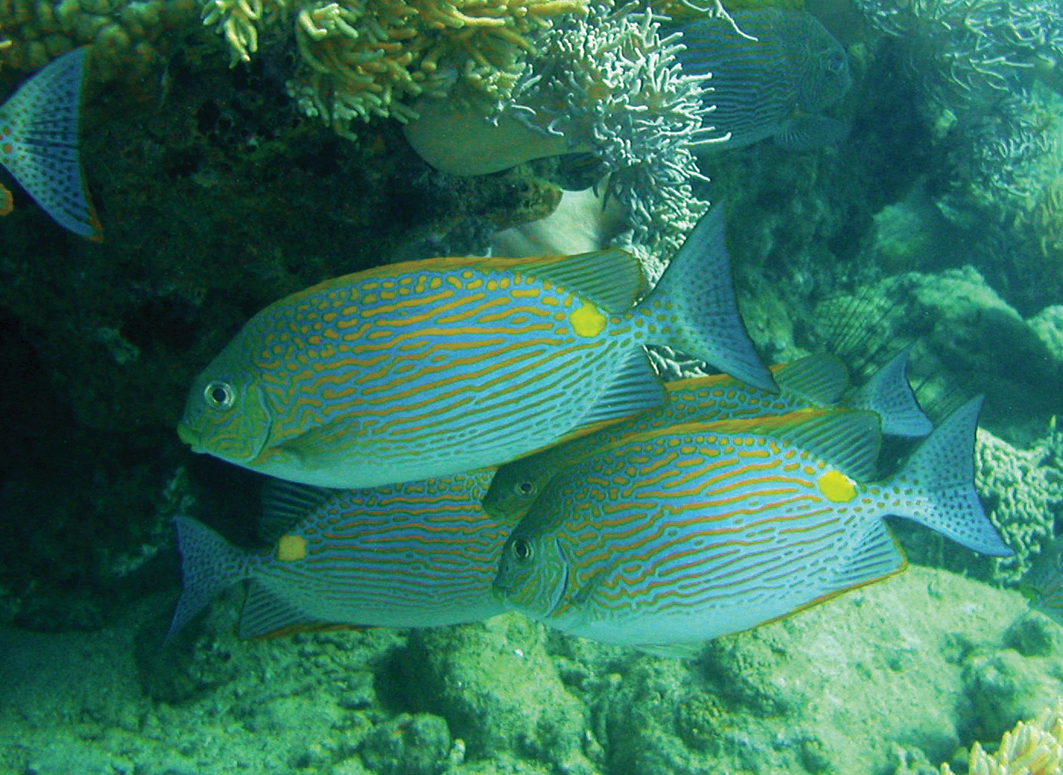Image: © Eric Clua, SPC
To gain access to full information on rabbitfish, download the information sheet produced by the LMMA Network and SPC.
If you have noticed a decline in your catches or are concerned about rabbitfish populations, here are some priority actions the community can consider in addition to national regulations:
Fish smart rules
Tabu areas
A ban on fishing in areas (sites) where spawning aggregations occur, which assumes that the community has some control over the spawning sites perhaps some distance away.


Temporary bans
A ban on fishing during the peak of the spawning season, which may involve several short closures at monthly intervals as some species appear to aggregate around the period of the new moon.
Gear restrictions
Combining one or both of the above two measures with restricting mesh-sizes in nets used and the protection of local seagrass beds.

Some species

Good to know: choose minimum mesh size rather than banning of gill nets
In some areas the banning of gill nets by fishing communities has protected against the overharvesting of rabbitfish on their spawning migrations and in their spawning aggregations. However, the permanent banning of gill net fishing may be unreasonable as adult rabbitfish (as well as mullet) are difficult to catch by other methods. An alternative is to restrict the use of small-mesh gill nets by imposing a minimum mesh-size.
Good to know: combine community-managed area with other rules
The setting up of a community-managed area where no fishing is allowed (a no-take area) may allow fish numbers to increase but will not protect the fish during their spawning migrations and at their aggregation sites unless other measures are taken.
Fishing methods
Rabbitfish are caught by several different fishing methods:
Spears are used at night when the fish are inactive and lying motionless on seagrass beds;
Gill nets and beach seines are used to catch feeding schools and to catch the breeding fish;
Small-mesh nets, cast nets, and seine nets are used to catch ‘bait balls’ of juvenile fish;
Baited hooks and lines are also used, even though the fish are mainly plant eaters.
Many rabbitfish are caught as they gather in large groups to breed (in spawning aggregations). Fishing in this way is destructive as these breeding fish are responsible for producing small fish, many of which will grow and be available to be caught in future years.
Management measures in the region
Several management measures have been applied to rabbitfish. Minimum size limits have been applied in many Pacific Island countries but it is doubtful that any nationally imposed regulation could be enforced over a large coastline with many fishing communities. Catch (bag) limits have also been applied, but such a measure is usually inappropriate in community fisheries unless the catch is to be sold.
Some fishing communities have banned night fishing with spears because the fish are vulnerable when sleeping in seagrass.
The family Siganidae includes 28 species, commonly called rabbitfish, in a single genus, Siganus. Rabbitfish have small mouths and many species are covered in maze-like patterns. The fin spines are equipped with poison glands that are capable of giving a painful wound. Rabbitfish are widely distributed across the Indian and Pacific Oceans.
Adult rabbitfish are active in estuaries, lagoons and shallow coral reef flats during the day.
Many species form feeding schools and graze over large areas of seagrass. The key habitats in the life-cycle of rabbitfish are the areas (sites) at which they gather to breed in spawning aggregations.
Rabbitfish feed on seaweed and seagrasses and, like parrotfish, they are believed to be responsible for keeping coral free of suffocating plant growth. They appear to graze continually on seagrass beds. Because rabbitfish are eaten by a large number of reef fish, they are important in coral reef food webs.
Rabbitfish have separated sexes and grow moderately quickly. Different species may become sexually mature within 1 or 2 years (at a length of about 15 cm) and reach lengths of over 40 cm.
Most species appear to have an extended reproductive season with waves of spawning that are linked to the moon cycle, often around the period of the new moon. They form large gatherings to breed (in spawning aggregations), often at sites with access to the open sea.
Half a million to more than 2 million eggs may be released by each female and these are fertilised by sperm released by the males. The fertilised eggs become attached to the sea floor before hatching to small forms (the drifting larval stages), which float in the sea for 1 to 2 months; less than one in every thousand survives to become a juvenile.
Juveniles often arrive at shallow seagrass beds in dense schools, sometimes called bait balls. Less than one in every hundred of these juveniles survives for the 2 years or so that it takes for them to become adults.
Related resources

To gain access to full information on rabbitfish, download the information sheet.

